Designing for diverse needs: How can UX better embrace inclusion?

We have all been there – using a product or service that is apparently designed to be intuitive, accessible and easy to understand, but instead finding the process to be difficult and frustrating. For some people, especially those from lesser heard communities, this can be a regular, or even daily, occurrence.
Inclusive design has been a key theme in recent years, but with diversity and inclusion programmes increasingly under pressure, there is a risk that recent progress is lost. How, therefore, can user experience (UX) take diverse needs into account in 2025?
“There are more conversations about inclusion, but there’s still a long way to go,” says Neha Mittal, customer experience and user experience (CX and UX) practice director at C Space Europe, Middle East and Africa. “Too often, inclusion is an afterthought, or it’s just a box to tick. There are some great intentions, but real change means making inclusion a core part of every project, not just something we do when we have extra time or budget.”
Arguably, inclusive UX starts with the make-up of the research and design team itself. “Team diversity has a big impact on how inclusive the team’s approach to UX is,” says Constance Ip, senior consultant – UX research at customer insight and service design agency Impact. “One that is fairly homogeneous (similar ages, backgrounds, education history, etc) runs the risk of operating within a similar set of assumptions and biases or a reluctance to consider new perspectives, highlighting the need to continue with diverse hiring when building your UX teams.”
Mike Penuliar, senior quantitative UX researcher at AnswerLab, argues that inclusive UX “needs to start at the ground floor” in bringing in teams with people from a wide range of experiences and backgrounds. Penuliar says: “As a neurodivergent individual who also happens to be a senior quantitative UX researcher and part-time PhD student studying UX, I’ve seen how many products often operate under the assumption that its user will have sustained attention, linear thinking, or low cognitive load.
“But for users like me, or my own neurodivergent child, that’s hardly the case. Accessibility and usability are sometimes an afterthought rather than a core principle, especially when it comes to accessibility across generations.”
One 2023 project between PA Consulting and Meta explored accessibility in virtual reality. The research included a quant and qual approach with the aim of empowering different voices and ensuring their needs were factored in throughout the work, which involved at-home ethnographic research with people living with disability to explore the barriers faced while using VR.
"Real change means making inclusion a core part of every project, not just something we do when we have extra time or budget"
Daniela Aguilera, principal consultant and specialist in accessibility and inclusion at PA Consulting, says that while there are good examples of inclusive UX practices, there is still progress to be made, with time and budget constraints often having a negative impact on UX strategy.
“Traditionally, the focus on nationally representative samples has led to the exclusion of lesser-heard audiences, resulting in their under-representation in UX design and research. This makes it challenging to conduct UX research at speed with an inclusive sample set,” says Aguilera.
Addressing the barriers of time and cost, she says, requires sample providers to be ““agile in responding to diverse sample sets and access needs”. She adds: “We should view the higher costs and additional time required as investments in overcoming these barriers.”
Interrogating practices
When designing inclusive UX practices, practitioners should “interrogate” their approach in a number of ways to make adjustments where necessary to remove barriers to participation, Aguilera says.
She advises: “Educate yourselves; there are a lot of great resources out there. Recruit a diverse sample set and do what you can to establish safety. Avoid assumptions and encourage participants to share any adjustments they might need or feedback they have, and invite them to interrogate your approach and language.”
Key to the success of inclusive UX is ensuring stakeholders are involved from the outset.
“Take your stakeholders on the journey with you, as this will help with buy-in and landing the insights,” says Aguilera, adding: “Most importantly, accept there is no one way to conduct inclusive UX. Humans are complex and made up of multiple identities so do not make assumptions and allow for flexibility and nuance.”
While many companies have begun to prioritise accessibility in their physical and digital products, such as incorporating screen readers, colour adjustments, captions, streamlined designs/content, and ergonomic variations and enhancements, notes Penuliar, implementation across brands – and across products within them – is inconsistent and is “failing to account the full gamut of user needs,” he adds. “Companies and teams need to think of designing accessible products not as a checklist of things that have to be done, but as a mindset that guides them.”
Part of the challenge is how to balance competing needs in UX, which can be tricky when solutions that help one group can have a detrimental impact on another. C Space’s Mittal says: “The best way is to listen, test with a diverse group and be open about the trade-offs. Sometimes, you can design flexible solutions that let people choose what works best for them. Always keep the most vulnerable users in mind – if you design for them, you often make things better for everyone.”
Offering direction
Some organisations have drafted best practice guidelines that aim to being inclusive practices to the forefront when designing services and products.
For example, The Design Justice Network is working towards making UX more inclusive by asking members to abide by 10 principles, including centring the voices of those directly impacted by the outcomes of a design process and prioritising design’s impact on communities over the demands of the designer.
In some industries, regulators have helped put greater focus on inclusion, such as the Financial Conduct Authority’s work on people in vulnerable circumstances in the finance sector. The Government Service Standard also asks that designers make sure everyone can use a service, which helps focus minds on achieving the widest possible access to government tools.
Chloe Langan, senior UX consultant at CXPartners, says that the company has worked hard to include people with low digital literacy, accessibility needs, different ages, genders, ethnicities and locations in its work, but is still “not 100% there yet”.
“On a practical level, it takes more time to bake in inclusivity to your practice,” she says. “You need to speak to more participants to avoid tokenistic research. It can also take longer to recruit people with diverse characteristics, as people don’t always disclose them. You have to take more time with screeners to make sure that the language is respectful and appropriate. You also need appropriate safeguarding, depending on who you’re speaking to.”
CXPartners has worked with NHS England on the subject, writing a guide to inclusive research for the organisation, and it also offers lessons for other types of research.
Among these, Langan says researchers should consider incorporating co-design practices, such as ideation workshops, and seek to involve users more in design processes.
She also cautions that “relationships with historically excluded communities” – particularly if the researcher is not part of that community – take time.
“You need to build trust,” says Langan. “Consider that maybe you’re not the right person to run that research or design, so work out who else might be. For example, go into research with a trusted person from that community who can act as a bridge and work more closely with them on designing the whole project approach.”
Finally, she notes: “Don’t assume what people might need when participating in research. The people we’re speaking to know what they need better than us, so create space for them to tell us and be flexible so you can meet these needs.”
Balancing different needs
Work needs to be done to balance different users’ needs by evaluating requirements, says Impact’s Ip – both for user groups and stakeholders of the project.
“In the case of the latter, it’s useful to refer to the research objectives and questions to review which priorities fall in or outside of project scope. Anything that gets de-prioritised gets moved into a backlog to address later.”
Ip says that there are also plenty of lessons to be taken from other places. “Having grown up in and travelled to different cities around the world, I like to look at cross-cultural design and cultural differences as inspiration for my own approach. The ‘design for everyone’ approach is always a good starting point.”
Ip cites the design of subway stations in Japan as one example of maximising inclusion for a diverse range of traveller needs, including the use of visual information.
"Don’t assume what people might need when participating in research. The people we’re speaking to know what they need better than us"
Diversity and inclusion programmes have come under increasing pressure in recent years, with some companies rowing back from previous commitments in light of political pressure. What does the future hold for inclusive research?
Langan concludes that while it is worrying to see the reversal of diversity and inclusion programmes in large employers, there is some cause for optimism.
“Inclusivity is more of a focus than it ever has been before,” she says. “Perceptions of inclusion have changed. I think more organisations are seeing it as an opportunity for new ways of thinking, rather than a constraint.”
Part of the solution is in good practice. Maureen Healy, principal UX researcher at AnswerLab, says inclusion should not be treated as a task, but as the foundation of good UX. She recommends asking questions such as ‘who isn’t at the table?’ and ‘who is our product for?’ early in the process, as well as looking at any assumptions and whether the team is flagging and discussing accessibility issues.
A commitment to humility is needed to progress in this area. Healy says UX researchers and developers must be humble and listen. “Respect what marginalised users show and tell you as truth. Commit to humility and the probability that something you made doesn’t work for someone. And keep asking: What can we get done next sprint?
“Anyone who says building for all isn’t feasible isn’t giving human ingenuity enough credit. We’ve cured diseases, split atoms, and sent people into space. We can build equitable technology – if we commit.”

We hope you enjoyed this article.
Research Live is published by MRS.
The Market Research Society (MRS) exists to promote and protect the research sector, showcasing how research delivers impact for businesses and government.
Members of MRS enjoy many benefits including tailoured policy guidance, discounts on training and conferences, and access to member-only content.
For example, there's an archive of winning case studies from over a decade of MRS Awards.
Find out more about the benefits of joining MRS here.





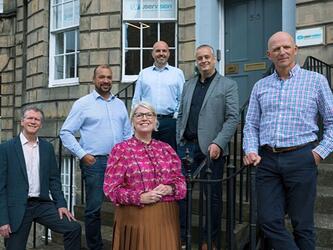
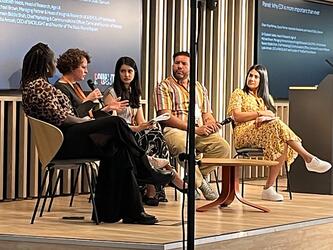
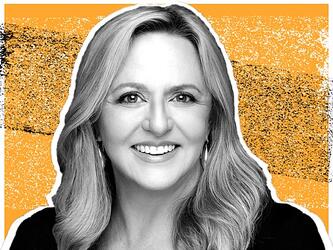
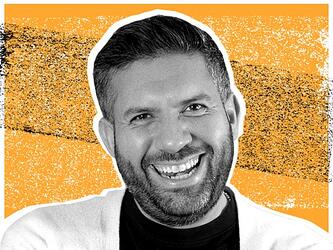
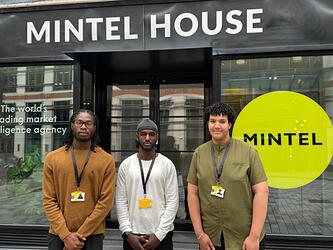




0 Comments